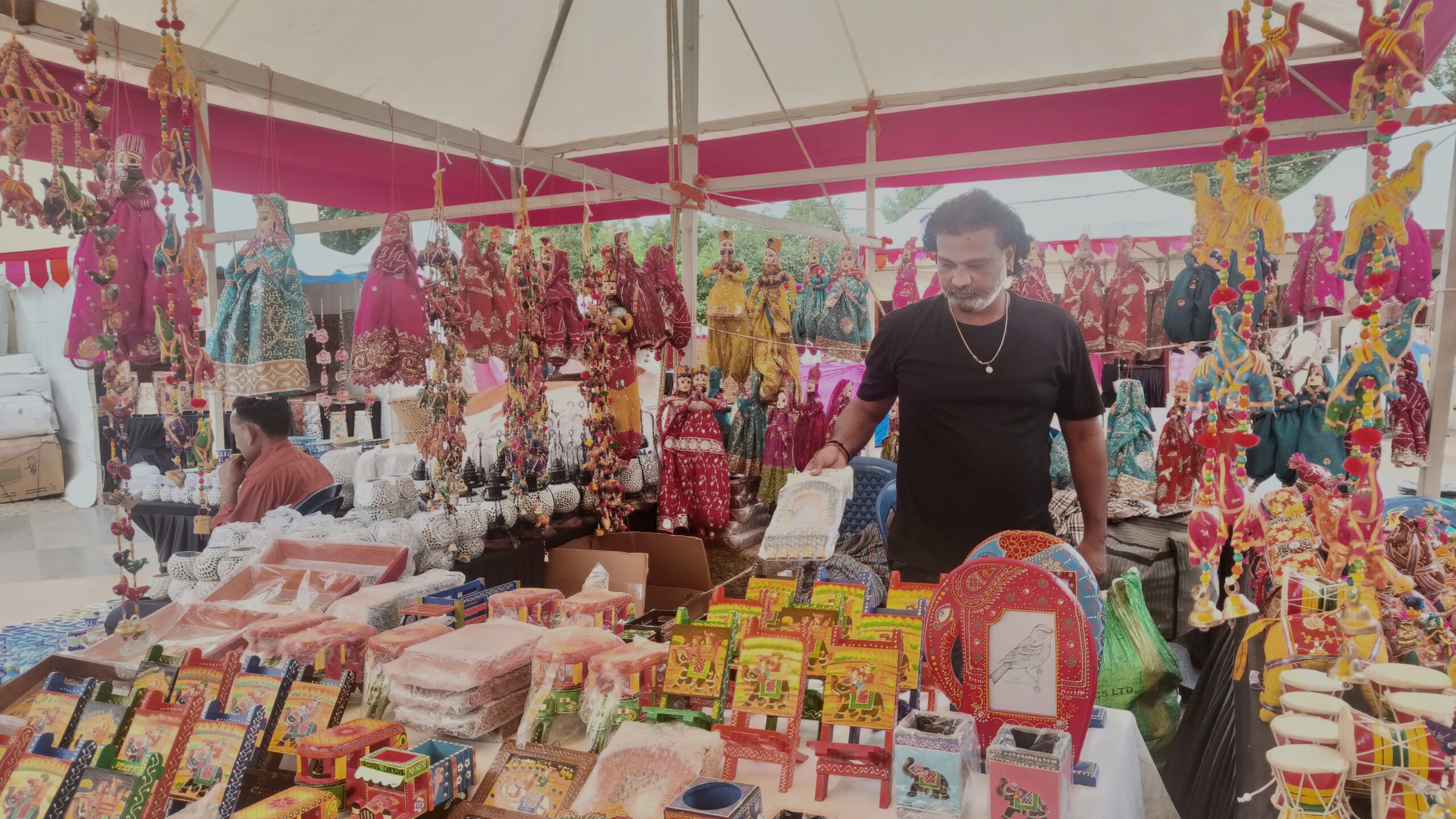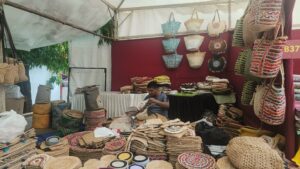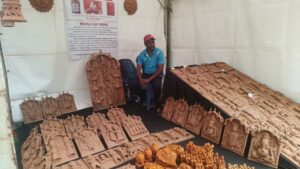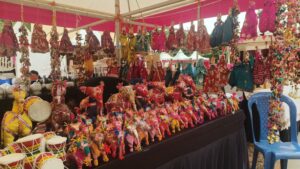The Dastkar Mela is not merely a marketplace, it's a museum without walls, a classroom without textbooks, a celebration of India's soul.
Published May 29, 2025 | 2:54 PM ⚊ Updated May 29, 2025 | 2:54 PM

The Dastkar Mela, a celebration of India's spirit, will be on at Bengaluru's Freedom Park till 3 June.
Synopsis: The Dastkar Mela is on at Freedom Park in Bengaluru. It is a festival of colours and stories, opening a window to the soul of India. The Mela, which opened on 28 May, is on till 3 June.
Under the overcast Bengaluru skies, something soft and soulful has bloomed in the concrete openness of Freedom Park.
It’s not loud, not showy, but walk a little closer and you’ll hear the quiet conversations of craft, the rhythmic shaping of clay, and the gentle rustle of recycled jute being folded into form. This is Dastkar Mela, a confluence of hands, heritage, and humble livelihoods.
With over 160 stalls, workshops, and food counters, the mela hosts artisans from across 25 states, each bringing with them the memories of their landscapes, the weight of their traditions, and the strength of their hands. But beyond the numbers lies something much more human: stories of survival, pride, and purpose.
Manoj’s stall sits quietly, filled with hand-stitched jute bags in earthy tones. The man from Uttarakhand
doesn’t look like a salesman. He looks like someone who has lived a story worth telling.

More people are drawn to sustainability these days.
“These are all made from recycled materials,” he says, holding up a neatly folded bag. “Mostly, the women back home do the stitching. Some men like me help too. It’s our livelihood. But it’s also something we love doing. There’s art in it.”
When asked why he chose to work with discarded jute, Manoj’s answer is as practical as it is poetic: “People throw things away. They don’t think about using them again. But we found a way to turn it into something useful. Something beautiful. It helps us survive, and it helps the Earth too.”
He points out that more people are drawn to sustainability these days. “They come here looking for bags that won’t harm the environment. That gives us hope that our work is not just liked, but needed.”
A few steps away, terracotta art rests like sacred relics. Here sits Rajendra Kumhar, a master artist from Molela, Rajasthan, whose hands shape not just clay but culture.

Rajendra Kumhar’s works have travelled across countries, but his heart stays rooted in Molela.
The son of Padma Shri Mohan Lal Kumhar and a National Award recipient himself, Rajendra doesn’t speak loudly. His work does that for him, storytelling art that carries echoes of tribal gods, village rituals, and timeless beliefs.
“This art speaks to the gods and the people,” he tells me, brushing clay dust from a freshly finished piece. “It connects what was, what is, and what can be.”
Rajendra’s works have travelled across countries, but his heart stays rooted in Molela. “I’m not just here to sell. I’m here to pass it on. I teach young artisans. This tradition can’t end with me.”
And indeed, it doesn’t end. It continues, in his carefully packed stall, in every detail of his carvings, and in the awe of every visitor who stops to ask: How is this made?
At a quieter corner of the mela, Vinod, a puppeteer from Rajasthan, sits in his modest stall surrounded by puppets and terracotta jewellery. Their painted eyes glint in the peeking sun, their costumes still vibrant.

Each puppet is a cultural messenger.
“I usually perform puppet shows,” he says, his voice calm and content. “But for now, I’m here selling what my family and I make. Maybe I’ll perform later. For now, this is our focus.”
His puppets are more than toys; they’re cultural messengers. Each one is handcrafted by his family, and many carry stories of Rajasthan’s royal courts, folklore, and village life.
Vinod remembers how last year’s mela in Bengaluru drew not just buyers but learners, people who wanted to understand how the puppets were made. “It felt good,” he says. “To know someone is curious, to know the tradition might live on.”
The Dastkar Mela is not merely a marketplace, it’s a museum without walls, a classroom without textbooks, a celebration of India’s soul. From handwoven textiles and tribal jewelry to folk performances and live workshops, every corner buzzes with authenticity.
This year, Freedom Park becomes a crossroad where craft meets consciousness, where sustainability meets tradition, and where artistry meets appreciation. As the week unfolds, the mela promises not just beautiful creations to take home, but stories to carry in the heart.
(Edited by Majnu Babu).
